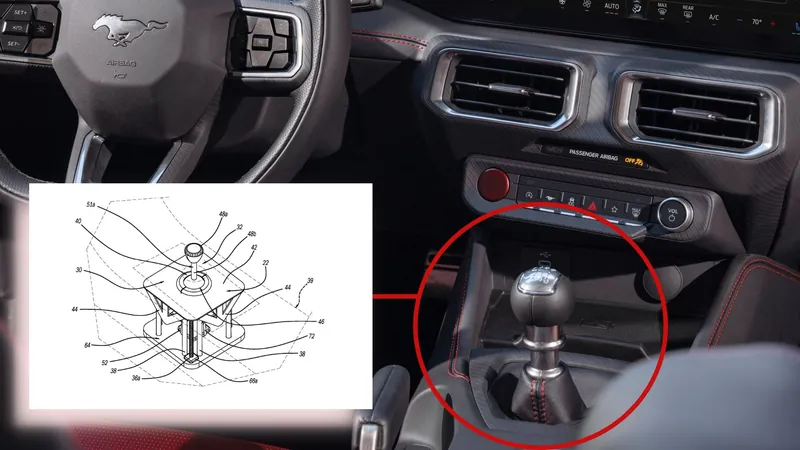
Ford's Revolutionary H-Pattern Shifter for Electric Vehicles: A Game-Changer for Driving Enthusiasts!
2025-03-25
Author: Mei
In the ongoing evolution of electric vehicles (EVs), one of the significant challenges remains the perceived lack of driver engagement that many enthusiasts feel compared to traditional internal-combustion engines. The undeniable benefits of electric motors—like instant torque and efficiency—often come at the cost of that visceral connection provided by the vibrations and sounds of a roaring engine. However, a recent patent discovery suggests Ford may have an innovative solution that could transform the driving experience for the better.
Introducing a Groundbreaking Manual Shift Simulator
According to a patent filed in 2023, Ford is planning to introduce a manual shift simulator into future electric models, possibly even an electric version of the iconic Mustang. This ingenious design features an H-pattern gear lever that deploys from the center console, replicating the feel of a traditional manual transmission while offering a unique driving experience.
This shifter isn't just for show—its functionality includes feedback technology designed to enhance the driving experience. When activated, the lever will pass through distinct "manual shift" gates, allowing the vehicle's systems to adjust throttle response and acceleration profiles, much like a conventional car would. This means that drivers can enjoy thrilling power delivery reminiscent of their favorite gasoline-powered sports cars, without the need for fossil fuels.
Feeling the Power: Haptic Feedback and More
What sets Ford's shift simulator apart is the inclusion of haptic feedback. When idling, the shifter will produce shakes or vibrations that mimic the familiar lope of a V8 engine, ensuring that drivers feel as if they are truly behind the wheel of a powerful machine. Imagine having the thrill of real engine noise accompanying your gear shifts—Ford is likely to integrate sound enhancements that vary with the shifter's motions, providing an even richer experience for performance-oriented drivers.
The Debate: Is This Innovation a Stroke of Genius or Just Gimmicky?
While some may question whether artificial elements in an EV diminish the original appeal of electric driving, others celebrate these advancements for making electric cars more thrilling and engaging. Take the Hyundai Ioniq 5 N, for instance, which has garnered attention for its ability to blend serious performance with fun driving dynamics. Despite some minor software issues, its varying driving modes deliver a one-of-a-kind experience that can be both composed and exhilarating.
Ford’s patented shifter proposes a similar capability—when stowed, the vehicle can operate seamlessly as a classic EV, optimizing efficiency and smoothness. When the driver desires a little excitement, the shifter lifts, readying the vehicle for an engaged, spirited drive.
Potential Applications: Mustang Mach-E and Beyond!
The possibilities of this technology are vast. The Mustang Mach-E stands out as a potential candidate for such innovation, with the possibility of a high-powered, dark-horse version of the already hot GT trim. Additionally, Ford may be working on a fully electric Mustang coupe, positioning itself to compete with models like the Dodge Charger Daytona, making it one of the few non-crossover EVs available.





 Brasil (PT)
Brasil (PT)
 Canada (EN)
Canada (EN)
 Chile (ES)
Chile (ES)
 Česko (CS)
Česko (CS)
 대한민국 (KO)
대한민국 (KO)
 España (ES)
España (ES)
 France (FR)
France (FR)
 Hong Kong (EN)
Hong Kong (EN)
 Italia (IT)
Italia (IT)
 日本 (JA)
日本 (JA)
 Magyarország (HU)
Magyarország (HU)
 Norge (NO)
Norge (NO)
 Polska (PL)
Polska (PL)
 Schweiz (DE)
Schweiz (DE)
 Singapore (EN)
Singapore (EN)
 Sverige (SV)
Sverige (SV)
 Suomi (FI)
Suomi (FI)
 Türkiye (TR)
Türkiye (TR)
 الإمارات العربية المتحدة (AR)
الإمارات العربية المتحدة (AR)